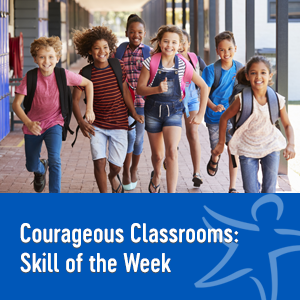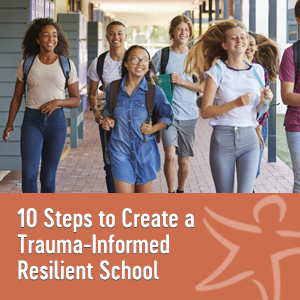The new school year is upon us, and it’s important to recognize that the beginning of the year can be difficult and can cause a variety of feelings for students and adults. To get started on the right foot, have students think about all of the feelings that their body may be experiencing. There may be so many that they become mixed up and they may even be unsure of how they are feeling. It’s not important to know exactly what we are feeling, but instead know that it’s OK no matter what. All feelings are normal and OK. It’s great if you are excited to be at school and it’s also OK if you feel mad, nervous, or sad. Together we will support each other and our feelings will change over time.
How can we help support our kiddos feelings? As early in the school year as possible, discuss concepts related to being courageous. Ask students what it means to be courageous and/or examples of being courageous.
Being courageous means (include some of these concepts):
- To be brave
- To believe in yourself
- To keep going even when something is difficult
- To not give up (to try your best)
- To handle tough things
- To accept yourself when you are making mistakes, when something is hard, or when you aren’t doing as well as you want
- To believe you can keep working hard to accomplish something (even when part of you thinks you can’t do it)
- Courage is something within you that is always there even when you don’t feel it and can’t find it (it is within all of us)
- Doing the right thing even when you don’t want to or when others don’t agree with you
Together, we can practice being courageous, and it will get easier for all of us.
Students can earn compliments, your school/classroom incentives, and can feel proud when using courageous skills. Remind students that an adult may not even know that they have used the skill, so encourage them to let an adult know when they were being courageous. Also, encourage students to notice when adults are being courageous. Teachers should be modeling these skills during the week (e.g., computer not working so being courageous by teaching the lesson a different way).
Reinforce ANY behavior that can be considered courageous. This week should have the most amount of reinforcement to help students develop a positive mindset about school and their ability to be successful. Acknowledgement also helps them to feel important and valued.
Our Courageous Classroom
Throughout the next several weeks, this blog will help you build a courageous classroom. The introductory statements below start simple, but will evolve into power SEL reminders for your students.
- In this room we will be courageous, we will work together, and we will be there for each other
- Some days we won’t feel courageous, but we will keep going and we will try our best
Optional follow-up activity: Create a banner or poster with courageous classroom in the title (We are a courageous classroom, Mrs. Smith’s Courageous Class, etc.). Have students decorate the poster with pictures or words to represent courage. You may also want to students and staff sign the poster.
Learn more with these offerings from Starr Commonwealth




